Standardised concentrations of morphine infusions for nurse/patient-controlled analgesia use in children

A system using pre-prepared standardized concentrations of morphine for paediatric N/PCA was implemented successfully and sustainably” Rashed et al (2019). Abstract: BACKGROUND: Standardizing concentrations of intravenous infusions enables pre-preparation and is effective in improving patient safety by avoiding large deviations from the prescribed concentration that can occur when infusions are made individually in wards and […]
Central line-associated bloodstream infection among children listed for liver transplantation

There is substantial risk for CLABSI among children with BA listed for liver transplantation. No clinical, demographic, or laboratory factor we tested emerged as an independent predictor of CLABSI” Triggs et al (2019). Abstract: BACKGROUND: Pre-transplant nutrition is a key driver of outcomes following liver transplantation in children. Patients with biliary atresia (BA) may have […]
Effect of a non-talking rule on the sound level in an outpatient infusion center

The aim of this naturally-occurring field experiment was to assess the influence of a non-talking rule on the actual sound level and perception of patients in an outpatient infusion center” Zijlstra et al (2019). Abstract: Noise is a common problem in hospitals, and it is known that social behavior can influence sound levels. The aim […]
How to prevent readmissions through OPAT clinics?
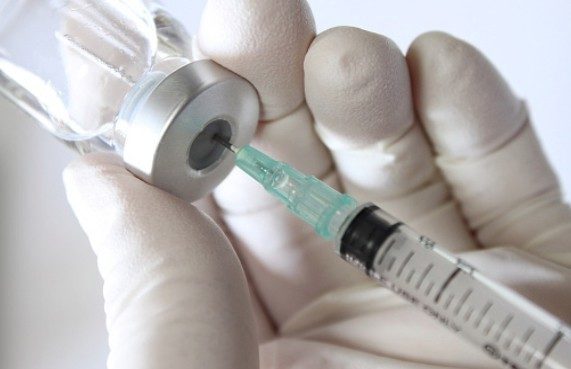
These results can inform potential interventions to prevent readmissions through OPAT clinic follow-up and to further assess factors associated with successful care transitions from the inpatient to outpatient setting” Palms and Jacob (2019). Abstract: BACKGROUND: Outpatient parenteral antimicrobial therapy (OPAT) programs allow patients to receive intravenous treatment in the outpatient setting. We developed a predictive […]
Refugee dialysis is a worldwide growing dilemma with limited experience
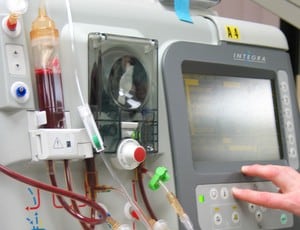
This study with the largest number of Syrian refugees undergoing maintenance hemodialysis showed good dialysis practices, acceptable values for dialysis adequacy and biochemical parameters along with lower mortality compared to native HD population of Turkey” Gursu et al (2019). Abstract: BACKGROUND/AIMS: Refugee dialysis is a worldwide growing dilemma with limited experience. This report presents the […]
Health care workers’ attitudes towards hand hygiene monitoring technology

Automated Radio-Frequency Identification (RFID)-based hand hygiene monitoring technology has been implemented in an infectious disease department to study healthcare workers’ (HCWs) practices and improve hand hygiene” Tarantini et al 92019). Abstract: BACKGROUND: Automated Radio-Frequency Identification (RFID)-based hand hygiene monitoring technology has been implemented in an infectious disease department to study healthcare workers’ (HCWs) practices and […]
Short peripheral IV catheter performance and clinical indication removal

A bundled approach was taken, focusing on insertion as well as care and maintenance needs. Consistent outcomes included at least 20% of catheters remaining functional more than 7 days and 35% more than 5 days.” DeVries and Strimbu (2019). Abstract: Two years following the adoption of clinical indication policies for short peripheral catheters (SPCs), a […]
Understanding the economic impact of health care-associated infections

This article describes an alternative hospital accounting framework outlining the cost of a quality model which can better incorporate the broader societal cost of HAIs into the provider perspective” Scott et al (2019). Abstract: The economic impacts from preventing health care-associated infections (HAIs) can differ for patients, health care providers, third-party payers, and all of […]
Enhancing infusion nursing knowledge of standard precautions

This article presents findings from developing and testing standard precaution case scenarios to enhance nursing knowledge” Hessels and Weaver (2019). Abstract: Standard precautions are a recommended set of actions health care workers should take to prevent health care-associated infections and potentially infectious exposures. However, they are not reliably practiced, many opportunities are missed, and a […]
Infusion nurse’s role in antibiotic stewardship

From hospital to home settings, the breadth of infusion nurse practice positions them to take principal roles in antibiotic stewardship program development across the continuum of care” morgan (2019). Abstract: Since the introduction of the first antibiotic, the quick development of resistance has threatened the efficacy of such medications. Improving antibiotic use is, above all, […]
Use of local anesthetics to relieve pain associated with intravenous cannulation

The use of local anesthetics to relieve pain associated with intravenous cannulation and arterial blood gas sampling is given low priority in many health institutions. This review sought to identify factors influencing nurses’ use of local anesthetics for these procedures” Alobayli (2019). Abstract: The use of local anesthetics to relieve pain associated with intravenous cannulation […]
Impact of drug library update delays on wireless IV infusion pumps

These findings support our assumption that potential serious harm can happen when IV infusions are administered with outdated drug limit settings due to delays in drug library updates on the pump” Hsu et al (2019). Reference: Objective: Our previous study showed that the issue of drug library update delays on wireless intravenous (IV) infusion pumps […]
Vascular access outcome with a dedicated vascular team based approach

The objective of this study is to determine the impact of a dedicated vascular team in the early detection of complications and improvement of vascular access patency” Raza et al92019). Abstract: The objective of this study is to determine the impact of a dedicated vascular team in the early detection of complications and improvement of […]
Methods for microbial needleless IV connector decontamination

The objective of this review was to compare the effectiveness of connector decontamination with 70% alcohol wipes, alcoholic chlorhexidine gluconate wipes, or alcohol impregnated caps to prevent catheter-associated bloodstream infection (CABSI)” Flynn et al (2019). Abstract: Background: The objective of this review was to compare the effectiveness of connector decontamination with 70% alcohol wipes, alcoholic […]
Impact of external cold and vibration and soap bubbles on phlebotomy pain

The purpose of this study was to examine the effect of the applications of external cold and vibration and blowing soap bubbles during phlebotomy in children aged between 3 and 6 years” Binay et al (2019). Abstract: PURPOSE: The purpose of this study was to examine the effect of the applications of external cold and […]
Multicenter clinical experience of Dalbavancin use in gram-positive infections

In this real-life study dalbavancin was primarily used in off-label indications for treatment of PJI, osteomyelitis and endocarditis. Success rate was high (89%), tolerability and safety were excellent in this setting” Wunsch et al (2019). Abstract: Dalbavancin, a lipoglycopeptide with prolonged half-life approved for the treatment of acute bacterial skin-and-soft-tissue-infections, can be used for the […]
Aluminium release by coated and uncoated fluid-warming devices

Coating for aluminium within medical devices in direct contact with infusion fluids should be recommended” Perl et al (2019). Abstract: The use of fluid-warming systems is recommended for infusion rates > 500 ml.h-1 to avoid peri-operative hypothermia. Some fluid-warming devices use disposable aluminium-heated plates for heat transfer, but there is no protective coating to separate […]
Risks associated with perioperative blood transfusions
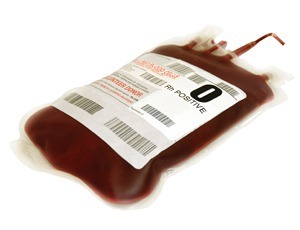
This article outlines the risks associated with perioperative transfusions and discusses the current recommendations for transfusion and use of alternatives to blood transfusion” Redding et al (2019). Abstract: It has been estimated that up to 40% of blood transfusions are given to surgical patients. Despite transfusion being safer than it ever has been, it still […]
Physiology of red and white blood cells described in this article

Blood is made up of plasma and formed elements, which are red blood cells, white blood cells and platelets. The red blood cells (erythrocytes) make up the vast majority of the cells present in the blood” Glenn et al (2019). Abstract: Blood is made up of plasma and formed elements, which are red blood cells, […]
Jehovah’s Witnesses and the issue of blood transfusion
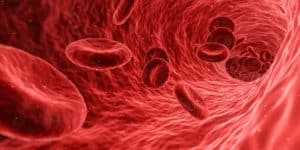
The Jehovah’s Witness Society is a Christian movement established in the 1870s. It has around 8 million members worldwide who believe that the Bible prohibits the transfusion of blood and its primary components. Some minor components of plasma and clotting factors may be acceptable to some members of the faith” Brydon (2019). Abstract: The Jehovah’s […]
Medial claviculectomy for the treatment of recalcitrant central venous stenosis

Medial claviculectomy is an effective treatment of recalcitrant central venous stenosis of the thoracic outlet” Auyang et al 92019). Abstract: OBJECTIVE: Outflow tract stenosis is the leading cause of hemodialysis access loss. Many lesions are highly resistant to endovascular treatment, necessitating open surgical intervention. We present our experience using medial claviculectomy for treatment of recalcitrant […]
Pharmacokinetic effects of endotracheal, intraosseous, and intravenous epinephrine

This study compared the maximum concentration (Cmax), time to maximum concentration (Tmax), plasma concentration over time, return of spontaneous circulation (ROSC), time to ROSC, and odds of ROSC of epinephrine administered by the endotracheal (ETT), intraosseous (IO), and intravenous (IV) routes in a swine TCA model” Burgert et al (2019). Abstract: Introduction: Limited prospective data […]
Point-of-care laboratory analyses of intraosseous, arterial and central venous samples

The aims of this study were to compare the intraosseous (IO), arterial and central venous POC values during CA and CPR and to see how the CPR values reflect the pre-arrest state” Jousi et al 92019). Abstract: INTRODUCTION: Screening and correcting reversible causes of cardiac arrest (CA) are an essential part of cardiopulmonary resuscitation (CPR). […]
Advantages and disadvantages of vascular access choice in hemodialysis

We present the advantages and disadvantages of each vascular access, as well as their main local (thrombosis, infection, steal syndrome) and systemic (heart failure, pulmonary hypertension) complications, which may also be encountered by primary care physicians” Pivin et al (2019). Abstract: The most frequent dialysis modality in Switzerland is hemodialysis. Patients need a proper vascular […]
Blood culture result profile and antimicrobial resistance pattern

The objective of this study was to evaluate patterns of bacterial isolates and local antimicrobial susceptibility patterns in neonatal sepsis” Sorsa et al (2019). Abstract: Background: Antimicrobial resistance is one of the major public health emergencies worldwide, and this trend didn’t spare developing countries like Ethiopia. The objective of this study was to evaluate patterns […]
Implementation of infection prevention and control in acute care hospitals in Mainland China
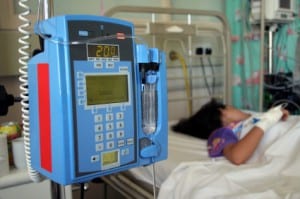
The objective of this systematic review was to assess adoption and implementation of the three areas issued by the “National Health Commission of the People’s Republic of China” in acute-care hospitals in Mainland China, and to compare the findings with the key and core components on effective IPC, issued by the European Centre for Disease […]
Evaluation of an emergency department to OPAT program for cellulitis

Emergency department (ED) patients with non-purulent skin and soft tissue infections (SSTIs) requiring intravenous antibiotics may be managed via outpatient parenteral antibiotic therapy (OPAT)” Yadav et al (2019). Abstract: Objective: Emergency department (ED) patients with non-purulent skin and soft tissue infections (SSTIs) requiring intravenous antibiotics may be managed via outpatient parenteral antibiotic therapy (OPAT). Prospective […]
Home self-administration of intravenous antibiotics

The key behavioural determinants emerging as encouraging patients to self-administer intravenous antibiotics were the perceptions of being sufficiently knowledgeable, skilful and competent and that self-administration afforded the potential to work while administering treatment” Tonna et al (2019). Abstract: OBJECTIVES: This study aimed to use a theoretical approach to understand the determinants of behaviour in patients […]
Outpatient parenteral antimicrobial therapy in vulnerable patients

Outpatient parenteral antimicrobial therapy (OPAT) programs can provide high-value care but may be challenging in people who inject drugs (PWID) and homeless individuals” Beieler et al (2019). Abstract: Outpatient parenteral antimicrobial therapy (OPAT) programs can provide high-value care but may be challenging in people who inject drugs (PWID) and homeless individuals. We conducted a single-center, […]
Patient confidence in speaking up about breakdowns in care

To assess patient comfort speaking up about problems during hospitalisation and to identify patients at increased risk of having a problem and not feeling comfortable speaking up” Fisher et al (2019). Abstract: Objective: To assess patient comfort speaking up about problems during hospitalisation and to identify patients at increased risk of having a problem and […]

